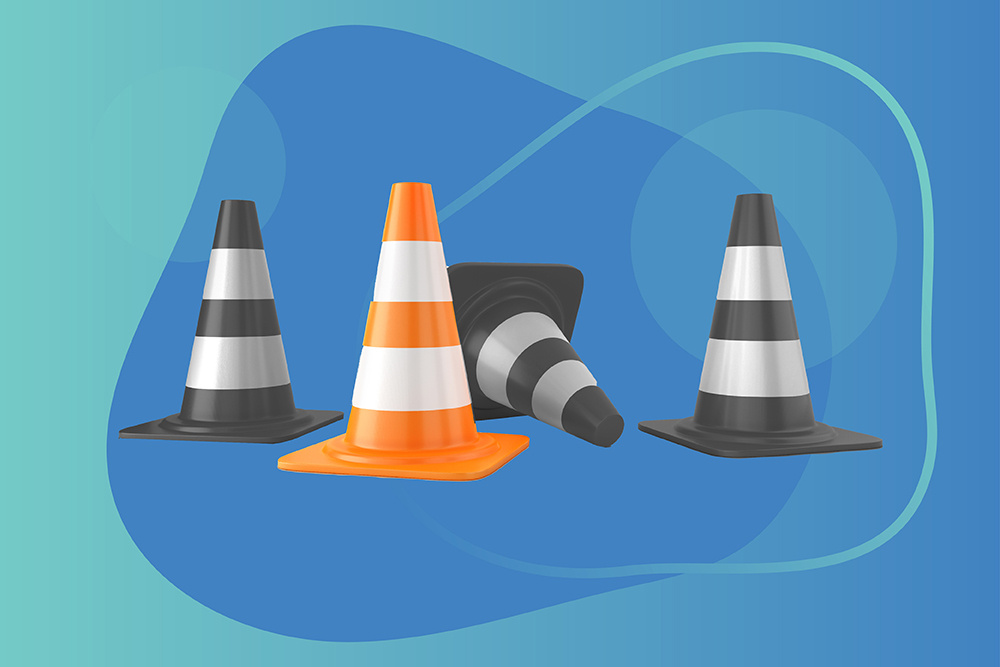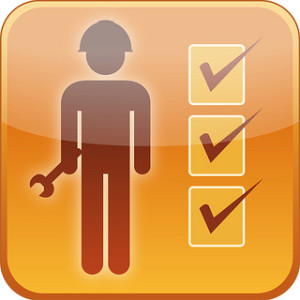Boosting Field Service Safety with a Field Service App
Unlike a comfy office job, field service technicians face dangers and hazards on the job all the time. The work they do is so important, but...

Working in the field service industry comes with a unique set of risks and hazards. With digital transformation sweeping across the field service industry, technology is playing a key role in minimizing these risks and prioritizing field service safety. Field service management software can improve safety by scheduling and dispatching technicians according to safety protocols, providing information and tools that reduce risks, and monitoring compliance with safety procedures.
In this blog, we'll take a closer look at why safety is paramount in field service management, the risks field service technicians and customers face, and how technology can help reduce those risks and improve safety.
Field service technicians are exposed to numerous potential hazards while working in the field. For instance, malfunctioning equipment can pose serious danger if it is not handled appropriately, putting both customers and technicians at risk of potential harm. Likewise, following proper safety precautions are essential for keeping technicians and customers safe from serious injury.
While ensuring safety is most important for protecting the health of technicians and customers, it is also important for maintaining a field service company’s reputation and bottom line. An accident on the job can break the trust of both your customers and technicians, resulting in a far-reaching and negative impact on your business.
Thankfully, field service management technology can help improve safety by providing information and tools that improve service accuracy and speed, reduce potential risks, and improve safety compliance. Now that you understand why safety is critical to success, let’s review some of the top risks that field service technicians and customers face.
Technicians and customers face numerous risks, including the following:
Working with dangerous tools and equipment is one of the biggest risks faced by field service technicians. Improper use of tools or equipment can lead to serious injury or even death. It is important for technicians to receive proper training on how to safely use tools and equipment. Field service management software can help facilitate comprehensive training programs for technicians, and also onboard and vet technicians for jobs based on their existing certifications and credentials.
Field service technicians are often tasked with working in high places. Likewise, falls from heights are one of the leading causes of injuries and fatalities in the field service industry. Using fall protection gear is one way that technicians can ensure proper safety. In addition, field service software can help optimize technician schedules during the safest weather and working conditions to minimize potential slipping hazards.
Confined spaces also pose a threat to the safety of field service technicians. Seeing as confined spaces are small and cramped, it is difficult for technicians to move around or escape if something goes wrong. Unfortunately, hazardous materials may also be present in confined spaces, which can pose a serious health risk. Field service software helps make certain that technicians receive proper training on how to safely work in confined spaces. In addition, features such as Augmented Reality (AR) provide technicians with access to critical service information while in the field. This helps to improve service accuracy while also reducing the need for technicians to leave and re-enter the small space multiple times.
Field service technicians are often at risk of being exposed to chemicals and hazardous materials on the job, and exposure to these materials can cause serious health problems. Not to mention, if the materials are present in a customer’s house, they also pose a risk to the customer’s health. Before technicians are dispatched for service jobs, it’s important that they receive proper training on safety protocols and how to properly handle hazardous materials. With access to real-time equipment and service data via field service software, technicians can more easily identify potential hazards in the field.
Finally, service technicians often work demanding hours that can lead to fatigue. And, it’s no secret that using heavy machinery while drowsy is extremely dangerous. Ensuring safe working hours for technicians is important to avoid dangerous and preventable accidents on the job.
However, with many technicians being third-party contractors, gaining visibility into their workload can be difficult when done manually. Advanced field service software helps manage a blended workforce of both employees and third-party contractors, enabling you to properly monitor and schedule workers.
Seeing as there are several significant safety risks associated with field service work, companies need to have a plan to address and minimize these risks. Implementing a robust safety management program can help companies like yours reduce the risk of injuries, improve safety compliance, and provide greater visibility into safety performance. In addition, a safety management system can help decrease workers' compensation costs, enhance employee morale, and maintain a positive reputation. Let’s cover the top aspects of a safety management program.
Developing standard safety measures is the first step in building a culture that encourages and fosters workplace safety. This includes providing technicians with access to safety equipment, including personal protective equipment (PPE) and safety equipment such as hard hats, gloves, masks, falling protection, and more. In addition, companies should provide comprehensive onboarding and training programs that educate technicians and ensure the use of up-to-date safety protocols.
Communicating safety expectations with technicians is critical for establishing safe work conditions. Without a solid understanding of what is expected of them in certain situations, there’s a higher likelihood of incurring potential risks or accidents. Field service software helps companies communicate with technicians and customers in real-time via in-platform messaging. This means new company protocols can be shared with technicians immediately, and customers can let technicians know if there are any changes to an upcoming service job that requires different equipment or PPE.
Creating a safety protocol is not a one-and-done deal. Safety risks can change over time, and it’s important to conduct regular safety audits and inspections. This also includes investing in new equipment and software solutions to further improve safety for technicians and customers.
Technology can help improve field service safety in a number of ways. Read on to learn the top ways that technology improves safety.
Field service software with built-in contractor management provides companies with real-time data about conditions in the field. This data helps field service companies monitor conditions and identify potential hazards before they actually become problems. Additionally, contractor data can help inform data-driven decisions about where to deploy resources and how to respond to safety incidents.
Field service management software collects and organizes technician data into cohesive technician profiles. For instance, a profile can include previous work history, certifications, skills, and work location. This detailed information helps companies track and schedule the best technicians for each job. With comprehensive onboarding and training, technicians can continue to build on their existing skills while following safety and security measures. Lastly, field service software also helps technicians communicate with field managers and customers, helping them stay abreast of important changes to service jobs or safety protocols.
Predictive maintenance is an innovative approach to service that allows technicians to remotely monitor field conditions via the Internet of Things (IoT) devices. With remote access to real-time equipment data, technicians can identify potential hazards before they even occur. This is a significant feat for field service safety, helping both technicians and customers stay safe while also preventing equipment downtime.
Field service software with AR capabilities is an incredible asset for improving field service safety and the customer experience. AR can be used for training technicians by simulating potential emergency situations in the field. In addition, AR allows technicians to access 3D overlays of equipment instructions directly into their real-world environment, helping to minimize mistakes and ensure safe service.
AI-driven field service software helps to automate complex workflows, such as scheduling, dispatching, reporting, and more. With highly optimized schedules, the best technician is always being dispatched for the right job, empowered with all of the necessary information and tools to get the job done on the first try. Intelligent reporting lets companies see which areas require heightened attention or safety measures, streamlining difficult and time-consuming decisions.
Field service management software is the secret to ensuring field service safety. However, not all solutions are suitable for complex companies with a blended workforce. ServicePower is a leader in field service management software that helps companies with employed, third-party, or blended workforces pursue field service safety.
Discover how we can help improve safety in your field service operations.

Unlike a comfy office job, field service technicians face dangers and hazards on the job all the time. The work they do is so important, but...

COVID-19 has rapidly changed our world. Business as usual is no longer an option and field service management is no exception. The field service...

With your technicians conducting service calls at various customer locations every day, risks on the job are inevitable. They may encounter hazards...